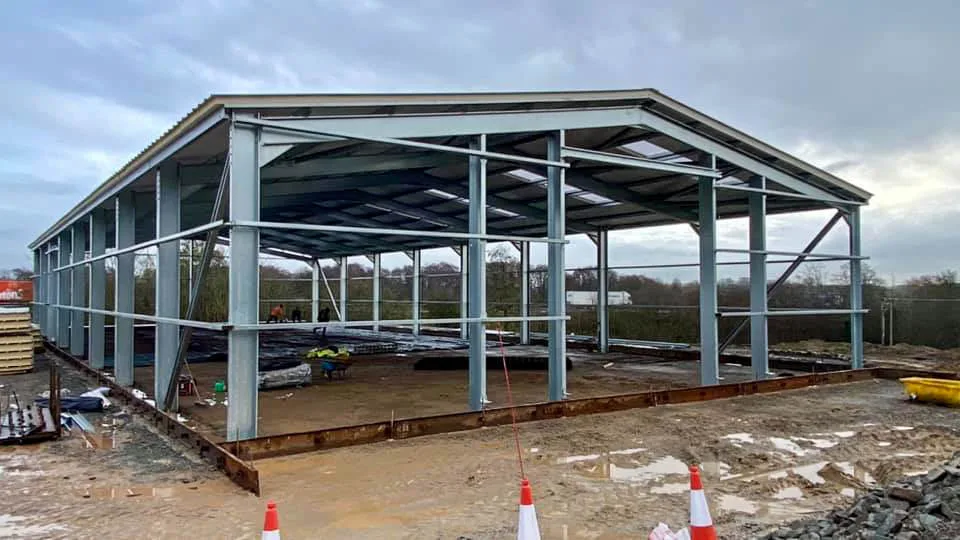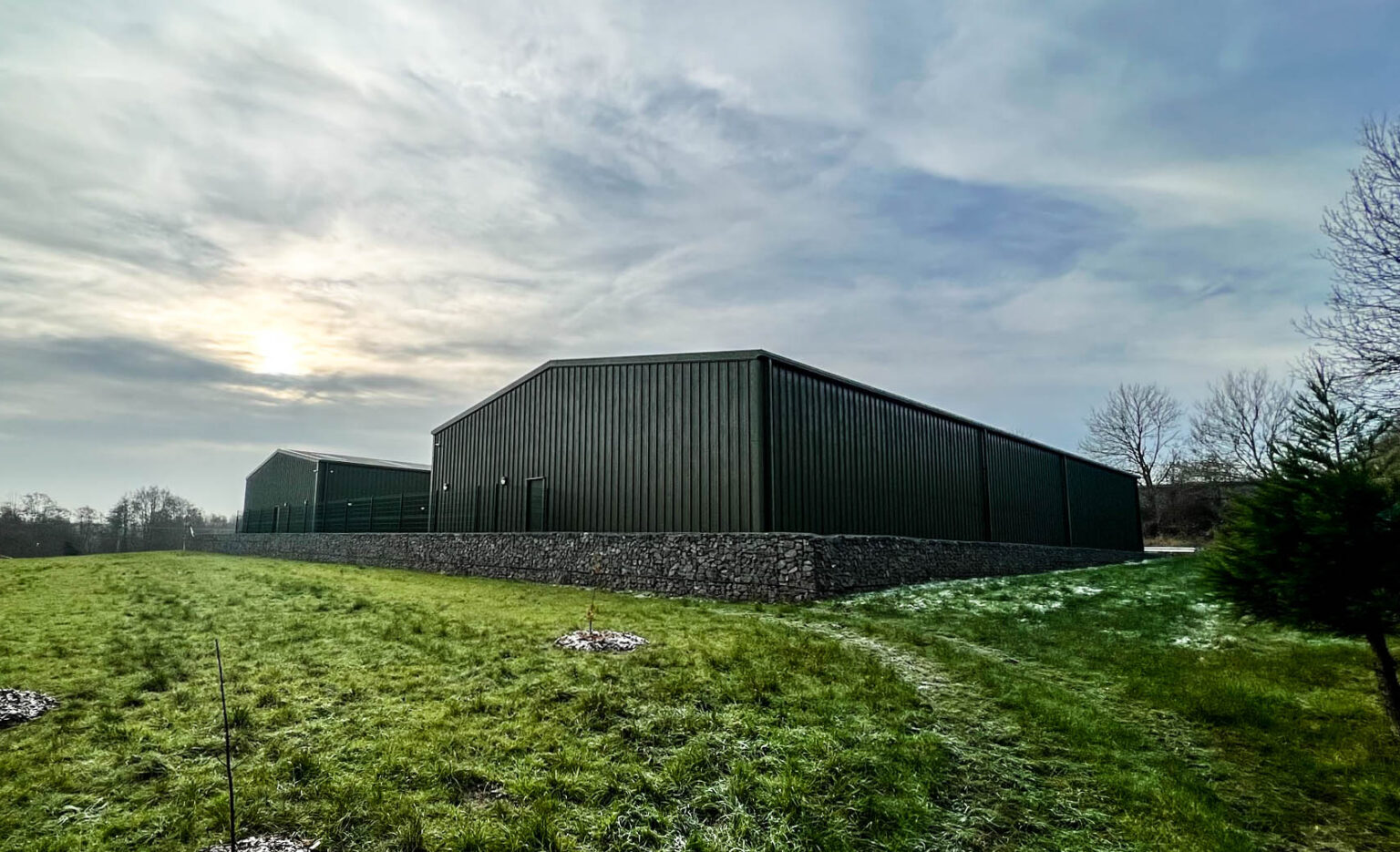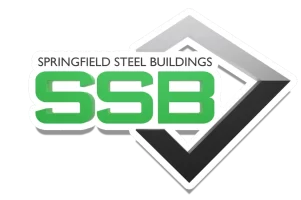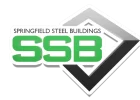Running a farm in the UK isn’t just about early mornings and muddy boots; it’s about planning, resilience, and making the most of your resources.
That’s why more and more farmers are turning to agricultural steel buildings as a practical solution for storing machinery, protecting livestock, and future-proofing operations.
Steel farm buildings have become a staple across the countryside in an industry where efficiency and durability count for everything. But what are they exactly, and why are they such a good fit for British agriculture?
So, What Are Agricultural Steel Buildings?
An agricultural steel building is a pre-engineered, steel-framed structure built for use on a working farm. These buildings are commonly used for machinery storage, grain and feed housing, livestock shelters, hay barns, workshops, and general-purpose utility spaces.
Unlike traditional timber or brick structures, steel agricultural buildings are manufactured off-site and assembled quickly once delivered. The result is a high-strength, low-maintenance solution that can stand up to the unpredictable British weather and the demands of daily farm use.
At Springfield Steel Buildings, we work with farmers across the UK to design and supply buildings tailored to the exact needs of their land, operations, and budget.
Why Steel Is the Right Choice for UK Farms
Steel has become the material of choice for modern agricultural buildings, and it’s easy to see why. Farming is physically demanding work, and your infrastructure needs to match the pace. Steel offers the strength and flexibility that traditional materials simply can’t deliver.
In the UK, the weather plays a big part in farm planning. High winds, heavy rainfall, snow and seasonal temperature swings all place strain on buildings, especially in rural and coastal regions. Steel buildings are engineered to handle these loads without cracking, warping or rotting over time. They’re also fire-resistant, pest-resistant, and much easier to keep clean, making them ideal for biosecure environments.
Beyond durability, there’s also speed. Prefabricated steel farm buildings can be delivered and installed quickly, which is essential when you’re under pressure to get a building in place before harvest or lambing season.

Common Uses for Agricultural Steel Buildings
Every farm is different, and so are its buildings. Steel is versatile enough to suit a huge range of uses, including:
- Machinery sheds: Protect tractors, balers, and other equipment from rust and weather damage.
- Grain stores: Keep valuable crops dry and secure with well-ventilated, easy-to-access storage.
- Livestock shelters: House cattle, sheep, pigs, or poultry in a well-ventilated, insulated space.
- Hay barns: Stack hay and straw safely in a purpose-built space with the right roof pitch and eaves height.
- Workshops and tool storage: Create a safe and dry place to maintain machinery or store everyday gear.
Whether you’re a dairy farmer needing a milking parlour or a mixed-use farm looking for a multipurpose unit, steel can be adapted to suit.
Are Steel Farm Buildings Customisable?
Absolutely, and this is one of the biggest reasons UK farms prefer steel buildings today. At Springfield Steel Buildings, we work closely with farmers to design buildings that match not just the size of the available land, but also the exact functionality needed.
You can customise everything from the overall footprint to the height, number and type of doors, insulation levels, roof pitch, internal layout, and cladding finish. Need extra-wide roller shutters for combine harvesters? No problem. Need separate bays for feed and livestock? We’ll design it in.
The beauty of steel is that it can be precision-engineered, which means nothing is wasted and everything serves a purpose.
Are Agricultural Steel Buildings a Good Investment?
In short: yes. A well-designed steel farm building can last for decades with minimal maintenance. Compared to traditional brick or timber buildings, the initial cost may sometimes be higher, but the long-term savings are significant.
Steel requires very little upkeep, won’t suffer from pests or rot, and doesn’t need repainting every few years. You’ll also benefit from faster construction, which can keep your operations running smoothly and reduce labour costs during setup.
With the right layout, these buildings can also boost productivity. For example, quicker access to machinery, better feed storage, or safer environments for animals all contribute to more efficient and sustainable farming.
Do They Comply with UK Planning and Building Regulations?
In many cases, agricultural buildings fall under permitted development, especially in England. However, it’s always important to check with your local planning authority before starting a build.
At Springfield Steel Buildings, we can support you through the process, providing structural drawings, site layout plans, and specifications that help you get approval if needed. All our agricultural buildings are designed in accordance with relevant UK building standards, including BS EN 1993 for structural steel.
We also consider wind and snow loads, foundation options, and ventilation requirements to ensure your structure performs as expected and stands the test of time.

Decades of Reliable Service
Farming never stands still, and your infrastructure shouldn’t either. Agricultural steel buildings offer strength, speed, and flexibility at a time when UK farms are under pressure to do more with less. Whether you’re looking to expand, upgrade or replace ageing timber barns, a well-built steel structure can provide decades of reliable service.
If you’re considering a new farm building, Springfield Steel Buildings is here to help. Get in touch with our team today to discuss your requirements and discover how we can support your next project.
Quick Q&As
What is an agricultural steel building?
An agricultural steel building is a prefabricated steel-framed structure used on farms for storing equipment, housing animals, or protecting crops. It’s durable, weather-resistant and quick to install.
Are steel farm buildings suitable for UK weather?
Yes. Steel buildings are designed to handle UK wind, rain and snow loads. They’re also resistant to pests, rot, and fire, making them ideal for British farms.
Do I need planning permission for an agricultural building?
In many cases, farm buildings qualify for permitted development, but this depends on your location and the size of the structure. Always check with your local authority before starting a build.
How long does it take to install a steel farm building?
Most agricultural buildings can be delivered and installed in a matter of weeks. Prefabricated steel components speed up the process and reduce disruption to your farm.
Can agricultural steel buildings be customised?
Yes. From layout and size to insulation and door types, these buildings can be tailored to match your specific needs. Springfield Steel Buildings specialises in bespoke farm buildings.

